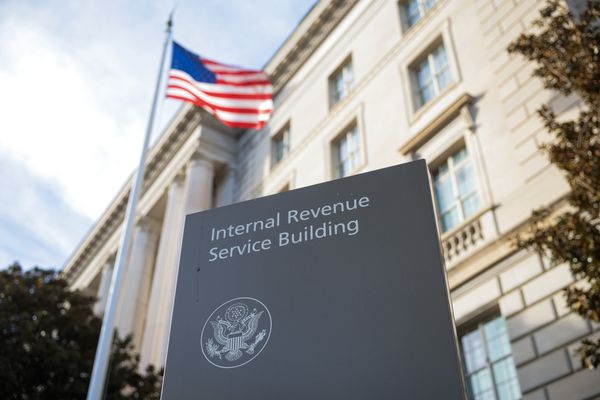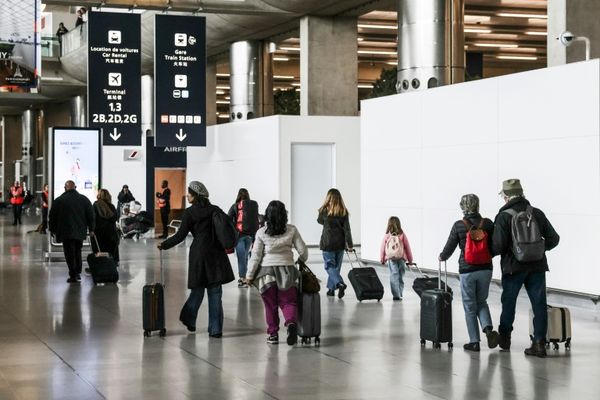CHICAGO — In what’s become an unwelcome tradition over the past two years, coronavirus cases and hospitalizations have been on the rise again in Illinois amid the holiday season.
This year, the increase in COVID-19 has been accompanied by surging cases of flu and other respiratory viruses. The developments have prompted public health officials to urge greater caution during upcoming celebrations, reiterating the familiar refrain of masking, testing and staying up to date on vaccinations.
Over the past week, Illinois saw the number of counties at the highest risk level for COVID-19 increase to 29 from 12, according to the Centers for Disease Control and Prevention. While all those counties are outside the Chicago region, Cook County and the collar counties are at the CDC’s medium community level, where older people and those with compromised immune systems are advised to wear masks indoors while in public.
“These elevated COVID-19 community levels, along with rising flu levels, are leading to a surge of respiratory infections and increased hospitalizations,” Department of Public Health Director Dr. Sameer Vohra said in a statement Friday. “I recommend all Illinoisans — and especially those most vulnerable including young children and individuals over 65 — take all preventive steps to protect themselves, their families and friends.”
Those steps include testing before visiting people at high risk for severe cases of COVID-19, staying home and getting treatment if sick, and getting a flu shot and the recently updated coronavirus vaccine booster, Vohra said.
As of Thursday night, there were 1,582 COVID-19 patients in hospital beds statewide, down slightly from earlier in the week but still up 40% in the two weeks since Thanksgiving. On Tuesday, the number of patients in Illinois hospitals with the virus surpassed 1,600 for the first time since mid-February, according to state data.
While the rise is a cause for concern, COVID-19 hospitalizations are nowhere near where they were at the same point in the previous two holiday seasons of the pandemic. A year ago, there were nearly 3,200 coronavirus patients in Illinois hospitals, and there were nearly 5,300 on the same day in 2020, just before vaccines became available.
Still, only about 17% of the state’s nearly 31,000 staffed hospital beds were available as of Thursday night, a lower percentage than on the same day in either of the previous years. What’s different this year is that while a smaller percentage of the occupied beds were filled by COVID-19 patients — 5% this year, compared with 10% last year and 16% in 2020 — more beds are filled with patients suffering from the flu and other respiratory illnesses.
Hospitalizations for COVID-19 reached an all-time high of 7,380 in January at the peak of the omicron variant surge, with coronavirus patients filling nearly a quarter of all beds in the state.
Although Chicago and Cook County remained at the CDC’s medium level Friday, cases and hospitalizations have been rising, the Chicago Department of Public Health said in a news release. Reported cases have jumped nearly 60% in Chicago in the last week, and the rise comes as influenza hospitalizations nationwide hit a decade high for this point in the flu season.
A coronavirus uptick has emerged since the Thanksgiving holiday, but a major surge like the Omicron variant caused in early 2022 has not materialized, said Dr. Judd Hultquist, assistant professor of medicine in the infectious diseases division at Northwestern University’s Feinberg School of Medicine.
“This is not unexpected. It’s quite consistent with what we would think about when we think about a respiratory virus. There are more people indoors. They’re interacting more because of holiday parties,” Hultquist said.
True case numbers are difficult to estimate because people are testing and reporting cases less often, he added.
The “big story,” Hultquist said, is that influenza, RSV, or respiratory syncytial virus, and other respiratory illnesses are each causing increased hospitalizations at the same time.
“When you add them all up, all of these waves occurring on top of each other is leading to a steady increase in occupancy,” he said.
If the illnesses continue to spread more broadly, they could threaten the quality of medical care by affecting hospital capacity, he said.
Facing that prospect, “hospitals continue to draw on the experience they have gained over nearly three years, to manage their operations and provide quality care to all patients,” said Amy Barry, a spokeswoman for the Illinois Health and Hospitals Association.
Also on Friday, the CDC signed off on the use of the updated Moderna and Pfizer vaccines for children as young as 6 months old.
Doses of the updated vaccines should begin arriving in Illinois on Monday, said Michael Claffey, a spokesman for the state health department.
“We advise parents to check with their health care provider in advance to make sure — and get the booster shots scheduled as soon as possible before the holidays arrive in order to provide maximum protection,” Claffey said.
The department also encourages parents to make sure kids have gotten their annual flu shots and to begin vaccinating children who have not received their initial doses of the coronavirus vaccine, he said.
Only 12% of the eligible population under age 5 have received even one dose, according to the state.
Dr. Allison Arwady, Chicago’s public health commissioner, said she is “thrilled that we will have the updated COVID-19 booster for the youngest Chicagoans next week.”
“But I remain very concerned about our older residents,” Arwady said, adding that only 1 in 3 Chicago residents older than 65 have gotten their updated booster.
Any Chicago resident can get COVID-19 and flu vaccines administered in their own home through the CDPH’s Protect Chicago At Home program.
As COVID-19 cases increase, Gov. J.B. Pritzker on Thursday renewed his statewide pandemic disaster proclamation that has been in effect since March 9, 2020, a move his administration has defended as he’s peeled back most of the restrictions and mandates that once accompanied it.
Maintaining the state proclamation as long as there’s federal disaster declaration in effect allows Illinois residents to access resources such as increased benefits for food stamp recipients, Pritzker spokeswoman Jordan Abudayyeh said.
“While we have made significant progress in managing this pandemic, there are still useful tools available to the state if we align our disaster proclamation with the federal disaster proclamations,” she said.
Pritzker’s executive orders also allow the state to approve out-of-state and inactive health care workers to practice in Illinois, which is helpful as hospitals continue to combat a shortage of workers along with rising patient loads, Abudayyeh said.
———







